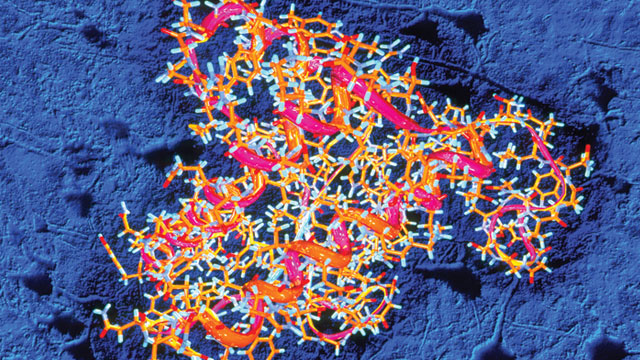In Kurt Vonnegut’s Cat’s Cradle, scientists create a highly stable form of crystalline water called “ice-nine” that stays frozen even at high temperatures. Ice-nine instantly freezes any liquid water it touches. Its accidental release into nature solidifies the oceans and all contiguous bodies of water, and global catastrophe threatens our existence. Luckily for us, ice-nine is fictitious. But its biological counterpart, unfortunately, is not. The misfolded proteins known as prions are very real.
Prions are proteinaceous infectious particles, formed when normal proteins misfold and clump together. Biochemists Byron Caughey of the National Institute of Allergy and Infectious Diseases and Peter Lansbury of Brigham and Women’s Hospital were among the first to explore the analogy between Vonnegut’s ice-nine and prions in their 1995 review of scrapie, an infectious and deadly neurological disease of sheep. Like ice-nine, the particles that spread scrapie consist of highly stable crystals of a normally innocuous material found in the brains of sheep. Crystalline clumps of a misfolded version of this protein coax other molecules of the same protein to fold into the aberrant conformation. The process continues until virtually all of that protein in a cell or tissue has been converted to prions. In the case of scrapie and other mammalian prion diseases, the consequence of this self-amplifying cycle is an accumulation of toxic clumps of proteins that destroys neurons and invariably kills the organism….







